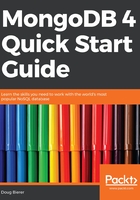
Modeling objects without SQL
A classic paradox in object oriented programming (OOP) code that requires database access is caused by the two-dimensional architecture of the traditional RDBMS. The two dimensions, rows and columns, are in turn grouped into tables, much like a legacy spreadsheet. In order to achieve the third dimension one needs to perform resource intensive joins and form relationships between tables. In order to map programming object classes to the database, incredible programmatic gymnastics are required to achieve the goal.
With MongoDB, there is no rigid database schema you must adhere to. Instead of rows you insert documents. A set of documents is referred to as a collection. Each document can directly model an object class, which in turn greatly facilitates the work of storing and retrieving from the database.
MongoDB has its own rich query language, which can perform tasks similar to what the developer might expect from a legacy RDBMS using SQL. Because MongoDB does not use SQL, it is often referred to as a NoSQL database.